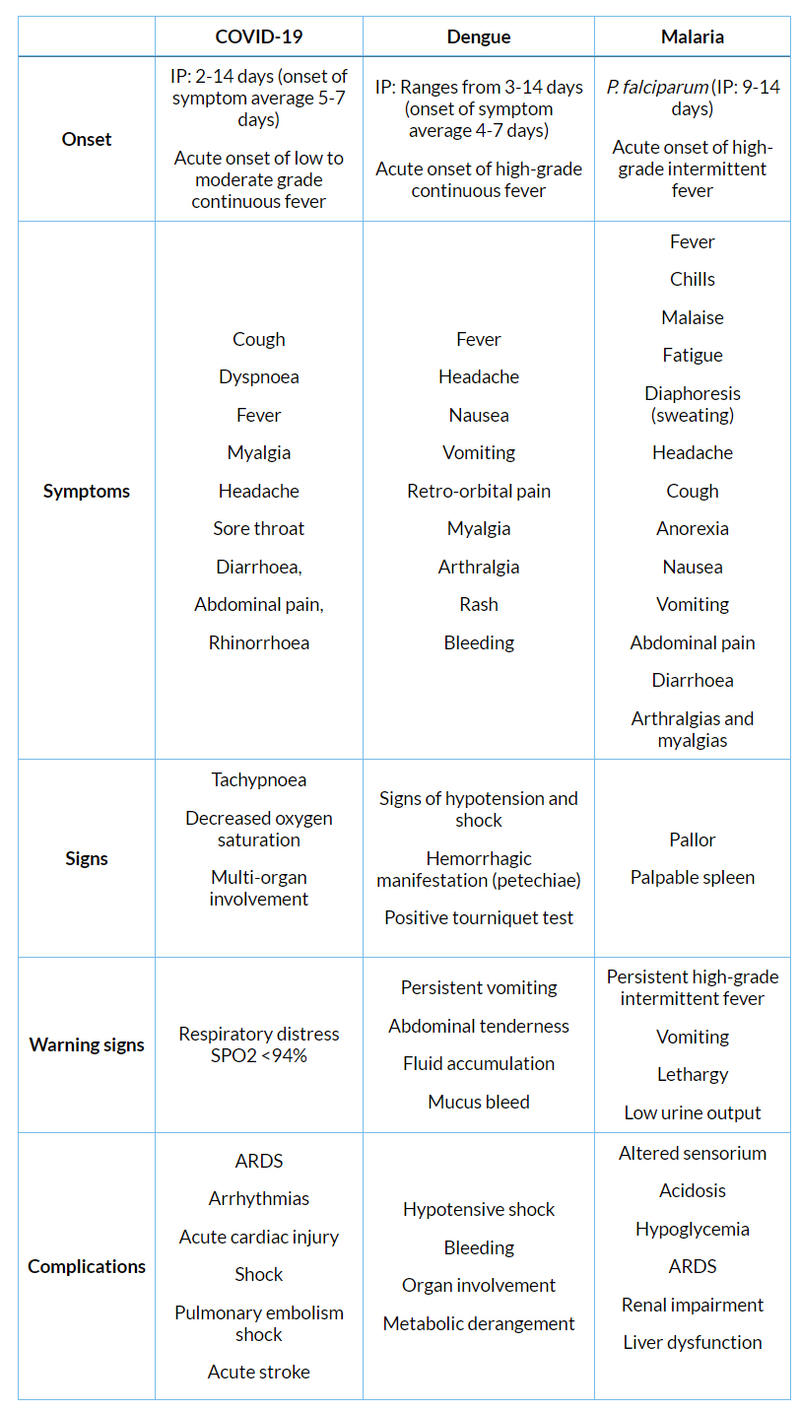COVID co-infections: What are the early warning indicators?
M3 India Newsdesk Aug 10, 2021
We have seen that seasonal infections along with COVID-19 can be difficult to manage and may need careful diagnosis and a mindful line of treatment. In this article, the last part of the series we have collated all the characteristics of seasonal infections that can occur with COVID-19.
For our comprehensive coverage and latest updates on COVID-19 click here.
Early warning indicators
If the patient is seen in primary care, the following criteria should be used to track his or her clinical development. The following are early warning signals that a patient should be sent to a higher level of care:
- Altered mental status (AVPU)
- Systolic blood pressure: <90 mmHg or <20% of baseline in hypertensive patients
- Heart rate/pulse rate: <50 or >120 bpm
- SpO2: <94% on room air
- Respiratory rate: <10 or >30 bpm
- Temperature: persistently >38ºC
- Urine output: <0.5 ml/Kg/Hr for consecutive 2 hours
- Spontaneous bleeding/haematuria
- Platelet count <50.000/cumm
Prevention
While the core preventive techniques for COVID-19 and seasonal influenza are distinct from those for the other illnesses addressed in this text, it is preferable that these illnesses be prevented in concert. States must make appropriate use of their resources, while the personnel is also diverted to respond to COVID-19. This can be accomplished by combining preventative measures.
Integrated surveillance: To make the most use of available resources, it is critical to ensure that IDSP networks are enhanced to include surveillance for COVID-19 cases in addition to dengue, malaria, chikungunya, leptospirosis, scrub typhus, and seasonal influenza.
At all times, basic preventative precautions against COVID-19 and seasonal influenza, such as avoiding large gatherings, keeping physical distance, practising good hand cleanliness, and following proper cough etiquette, must be observed. Vector control measures should be conducted in regions afflicted by or at risk of these illnesses, particularly in and near treatment facilities.
It is effective against vector-borne illnesses such as scrub typhus to use licenced insect repellents and ITN/LLINs. Leptospirosis prevention strategies include wearing protective clothing for those at risk of infection on the job (sanitation workers, rice-paddy and sugarcane workers, etc.) and avoiding polluted water. Seasonal influenza vaccination should be vigorously administered among healthcare professionals and other high-risk groups.
Participation of the community
Community assistance and awareness campaigns on COVID-19 and other seasonal illnesses must be guaranteed.
Conclusion
A coordinated effort is necessary to prevent, monitor, communicate, and handle such occurrences. Vigilance, a high index of suspicion, and continual knowledge of the likelihood of co-infections might assist physicians in averting the poor outcome of co-infection cases and improving clinical results.
Most conspicuous characteristics of several common illnesses


Disclaimer- The views and opinions expressed in this article are those of the author's and do not necessarily reflect the official policy or position of M3 India.
The author is a practising super specialist from New Delhi.
-
Exclusive Write-ups & Webinars by KOLs
-
Daily Quiz by specialty
-
Paid Market Research Surveys
-
Case discussions, News & Journals' summaries
